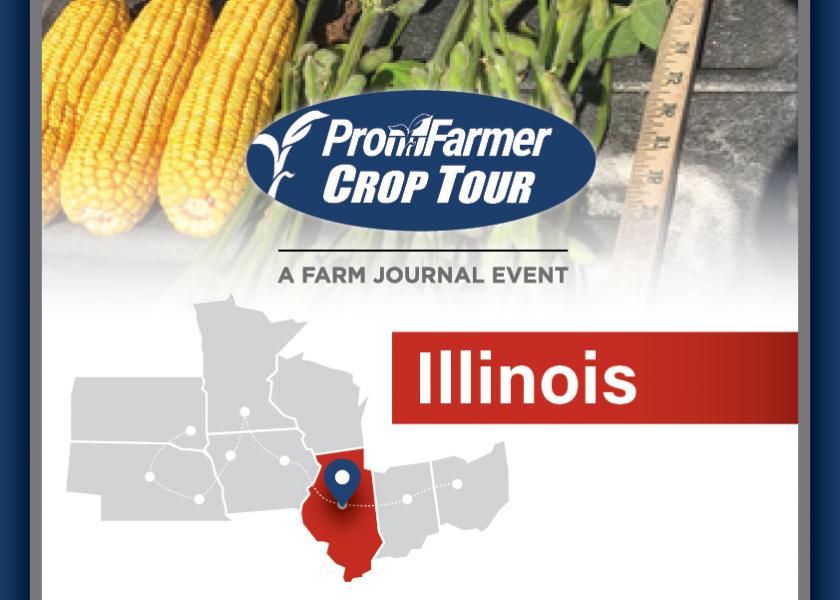From The Rows | Aug. 24, 2022 — Brian Grete (East)

Eastern Tour – Day 3
My route took me north out of Bloomington up through the northern part of crop district 5 and then to the DeKalb area before we headed west through districts 2 and 1. Corn yields along my route averaged 196.4 bu. per acre on eight samples, with a range of 167 to 234.3. Ear counts were consistent, aside from one sample, which came in at 87 and had a significant number of skips. The others ranged from 105 to 114. Our grain length ranged from 5.6 to 7.5. We didn’t see nearly the amount of tipback along my route that we saw in Ohio and Indiana. We also didn’t see anything that really wowed us, which surprised me a little. It was good corn, but it lacked the wow factor.
Pod counts in a 3’x3’ square averaged 1194.3 along my route, with a range from 799.2 to 1546.6. Aside from the low sample, the rest were all above 953.6 and aside from that one, they were all 1047.6 or higher. Soybean pod counts were a little less consistent than the corn along our route, but there are no major issues.
As has been the case in other areas of the eastern Corn Belt this week, moisture was not an issue. We talked with a farmer in Milledgeville, Illinois, who told us they had received 12 inches of rainfall during the summer. Farmers around there are expecting big yields and we saw nothing to question that.
Final Day 3 observations
Illinois’ corn and soybean crops are going to be very good this year. The question is whether they will live up to the lofty levels USDA estimated as of Aug. 1. USDA estimated the corn yield would increase 0.5% from last year, while the soybean yield is expected to climb 3.1% to a record 66 bu. per acre.
Our corn yield in Illinois was 190.7 bu. per acre, down 2.4% versus what we found on Crop Tour last year but up 2.7% from the three-year average. But Crop Tour has been low in the recent high-yielding years. The southern part of the state carried a heavier load in those years. The question I have this year is whether the southern portion of Illinois that we don’t sample on Crop Tour has enough yield to again help the state average. After a hot and dry spell in June and July, that area received some heavy rains in late July and early August. But was there already irreparable damage done by the midsummer heat and dryness?
Soybean pod counts in a 3’x 3’ square in Illinois averaged 1249.7, down 2.4% from last year’s Tour results. Even with a lower pod count, soil moisture is up sharply from year-ago and the three-year average. The yield factory is there for soybeans to hit USDA’s estimate if weather is favorable from the end of Crop Tour until harvest.






